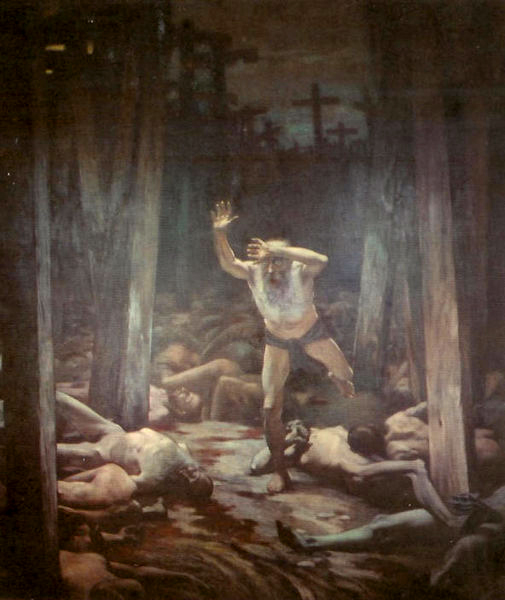The legend of the Wandering Jew – also known as the Eternal Jew – first appears in medieval English chronicler Roger of Wendover’s Flores Historarium (1228), who claimed that its source was an Armenian bishop who had seen the Jew. In this account the Wandering Jew is said to be a cobbler named Cartaphilus. While carrying his cross on the way to Calvary, Jesus asked to rest against the wall of the cobbler’s house, but was refused. Angered, Jesus responded by cursing Cartophilus, saying “I will stand and rest, but you will go until the last day”, thus condemning him to roam the world without rest until the end of time.[1][2]
The story became popular across Europe after its retelling in a German pamphlet published in 1602, in which the Wandering Jew is named Ahasuerus.[a]In the Italian version the Wandering Jew is called Giovanni
Buttadeus, and in the Spanish Juan Espera en Dios.[1] The pamphlet quotes the lines from Matthew’s gospel (16:28), which some believe to be the source of the legend:[1]
In most accounts the Wandering Jew converts to Christianity and is baptised, in the vain hope of lifting the curse.[1]
Notes
| a | In the Italian version the Wandering Jew is called Giovanni Buttadeus, and in the Spanish Juan Espera en Dios.[1] |
|---|

